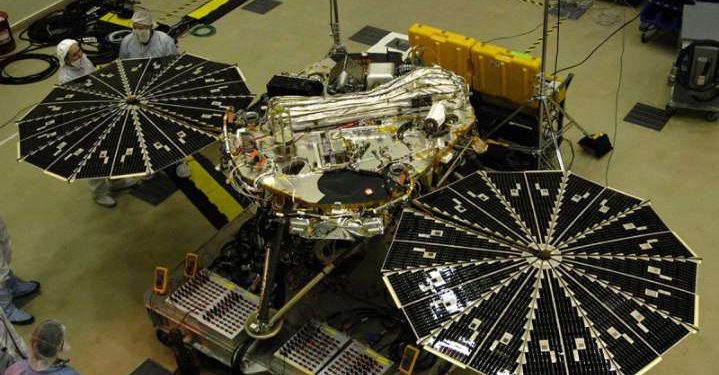Washington: NASA’s InSight lander – the first mission dedicated to exploring the deep interior of Mars – has made its first course correction towards the red planet, the US space agency said Thursday.
InSight, short for Interior Exploration using Seismic Investigations, Geodesy and Heat Transport, is currently encapsulated in a protective aeroshell, which launched on top of an Atlas V 401 rocket May 5 from California.
Wednesday, the spacecraft fired its thrusters for the first time to change its flight path, NASA said in a statement. This activity, called a trajectory correction maneuver, will happen a maximum of six times to guide the lander to Mars.
“This first maneuver is the largest we’ll conduct,” said Fernando Abilleira of NASA’s Jet Propulsion Laboratory (JPL), InSight’s Deputy Mission Design and Navigation Manager.
“The thrusters will fire for about 40 seconds to impart a velocity change of 3.8 metres per second to the spacecraft. That will put us in the right ballpark as we aim for Mars,” Abilleira said.
Every launch starts with a rocket, which is necessary to get a spacecraft past the Earth’s gravity – but rockets don’t complete the journey to other planets. Before launch, every piece of hardware headed to Mars is cleaned, limiting the number of Earth microbes that might travel on the spacecraft. However, the rocket and its upper stage, called a Centaur, don’t get the same special treatment.
As a result, Mars launches involve aiming the rocket just off-target so that it flies off into space.
Separately, the spacecraft performs a series of trajectory correction maneuvers guiding it to the red planet. This makes sure that only the clean spacecraft lands on the planet, while the upper stage does not come close.
Precise calculations are required for InSight to arrive at exactly the right spot in Mars’ atmosphere at exactly the right time, resulting in a landing November 26. Every step of the way, a team of navigators estimates the position and velocity of the spacecraft, NASA said.
Then they design maneuvers to deliver it to an entry point at Mars.






































